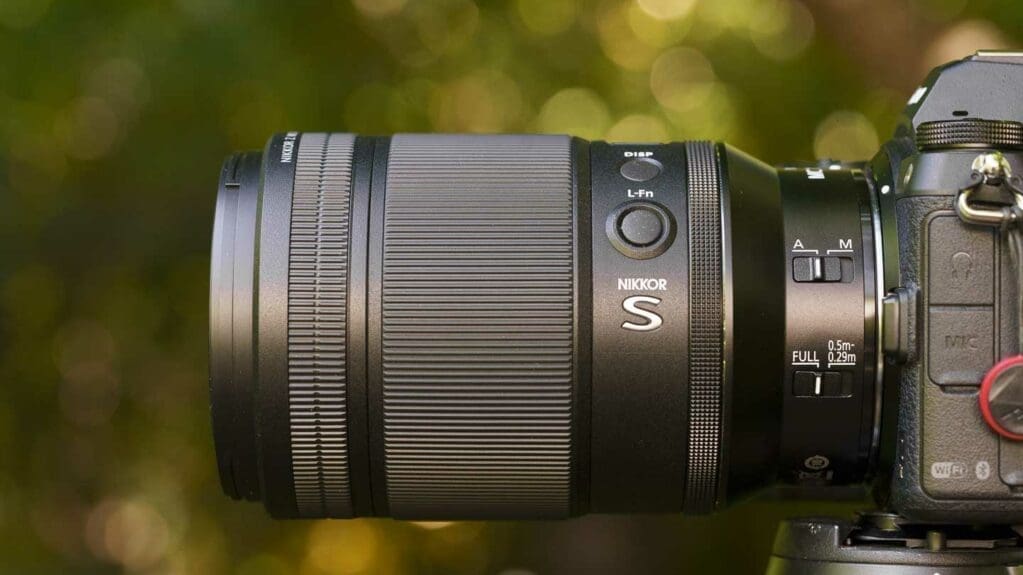A focal length of 105mm is popular for macro photography, but it’s also well-suited to other types of photography, especially portraiture.
While the Nikon Nikkor Z MC 50mm f/2.8 is an excellent lens, the Nikon Z MC 105mm f/2.8 VR S is a more premium optic and it has an optical construction to reflect that. Inside its weather-sealed barrel there are 16 elements arranged in 11 groups with three ED (extra-low dispersion) elements and an aspherical element. The ED glass reduces chromatic aberration while the aspherical element combats aberrations such as coma distortion and helps to maintain image quality towards the edges of the frame.
There are also elements with Nikon’s Nano Crystal and ARNEO anti-reflection coats to combat flare and ghosting by reducing reflections across a range of light wavelengths.
In addition, the front element of the Nikkor Z MC 105mm f/2.8 VR S has a fluorine coating to help it shed water droplets, dust and fingerprints.
Unlike the Z MC 50mm lens, the Nikon Z MC 105mm f/2.8 VR S has an internal focusing system that’s driven by two stepping motors (STM). This means that the focusing is quiet and the lens doesn’t extend during focusing. There’s also full-time manual override of the focusing, meaning that even in autofocus mode, the focusing can be tweaked manually.
As a true macro lens, the Z MC 105mm delivers life size, 1:1, reproduction at its closest focusing point of 29cm from the focal plane (ie the sensor). This equates to a working distance of around 13cm between the point of focus and the front element of the lens.
In addition to the broad focus ring, the Nikkor Z MC 105mm f/2.8 VR S has a dedicated control ring that can be set to adjust the aperture, ISO or exposure compensation, leaving the focusing ring free to adjust the focus.
There’s also a small OLED screen that can display key information such as the focus distance and aperture. This springs to life after the nearby ‘DISP’ button is pressed.
Below the DISP button, there’s a customisable lens function (L-Fn) that can assigned one of a long list of function’s via the ‘Controls’ section of the camera’s Custom Setting Menu.
There are two switches on the lens barrel, the first is the usual A/M button to swap between auto and manual focusing while the second is a focus limiter switch. This has two settings, full and 0.5m-0.29m. With the latter selected, the lens will only focus on a subject at between 50cm and the closest focusing point.
The VR in the lens’ name denotes that it has Nikon’s vibration reduction image stabilisation system on board. It works in partnership with the stabilisation systems in most of Nikon’s Z-series cameras including the Nikon Z7 II and Nikon Z6 II. The lens’ VR is claimed to offer 4.5EV of shutter speed compensation.
Although the lens is marked as having a maximum aperture of f/2.8, the focusing distance has an impact upon it’s effective aperture. As a result, when the Z MC 105mm f/2.8 VR S is focused at infinity, the aperture range is f/2.8 to 32 and when it’s focussed at its closest point, it’s f/4.5 to 51.








